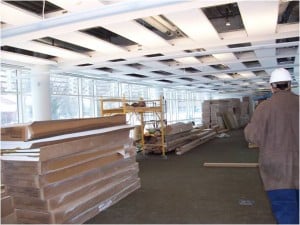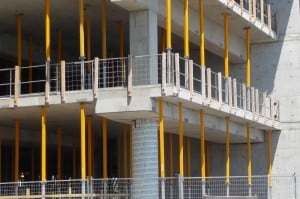Tenant Improvement Decisions
Tenant improvement Decisions
Let’s go over how a Landlord will or will not consider TI allowances for a warehouse space: There are 3 primary factors to consider.
Cost:
An owner will typically calculate the total consideration of the lease by multiplying the monthly rent by the term of the lease. The result of the calculation is the gross amount of revenue that the owner will receive from you as the tenant over the full term of the lease. Using the figure, the Landlord has calculated, they will make a determination whether to invest a small percentage of this future income to secure a tenant.
Tenant improvement decisions such as painting and carpeting the office areas re- painting the warehouse and office walls are standard finish out. Also damage to dry wall would be a standard finish out to make the space ready. Some tenants want improvements over and above normal turnover renovation.
Here is an example: a tenant requests that new lighting in the warehouse at a cost of $10,000 and the total gross income of the lease was $1,000,000. Chances may be good that the owner would accept this TI request. 
On the flip side, if the tenant requests that the power service to upgrade to 3 Phase power at a cost of $100,000 and the lease income was $750,000 it would be a tough negotiation. The negotiation aspect is tougher because the upgrade cuts into revenue too much for the owner.
Resources:
The Landlord has to assess the amount of cash they have on hand to fund tenant improvements. Most owners have a tenant improvement “savings” from the rents received in the past for (paint, carpet, etc.). If there is a mortgage on the property, most commercial real estate lenders will require a reserve for replacements.
Reserves for replacements allows the owner to not spend all of the income received jeopardize his ability to re-let the space when a tenant vacates. Would a tenant be required to pay for improvements? Yes, if the Landlord does not have the funds they may provide an abatement concession to wash out the tenant expense.
Types of Tenant Improvements:
Some tenant improvement decisions provide value to the tenant occupying the space and no value to the landlord. Some improvements such as adding a dock to the warehouse may provide value to the landlord for marketing the property down the road. Specialty improvements defined as interior type improvements that are re-done after the tenant moves out.


 ll want to ask an attorney for review if your office lease seems complex or the language in it is hard to comprehend. There can be large office leases or relatively short leases that have easy or tough language within the lease. Potential problems can be avoided with some by having your attorney translate and offer modifications regarding the details of your office or warehouse lease. Simple straight forward leases tend not to need the oversight, but it is always the tenant’s decision as to engage with an attorney or not.
ll want to ask an attorney for review if your office lease seems complex or the language in it is hard to comprehend. There can be large office leases or relatively short leases that have easy or tough language within the lease. Potential problems can be avoided with some by having your attorney translate and offer modifications regarding the details of your office or warehouse lease. Simple straight forward leases tend not to need the oversight, but it is always the tenant’s decision as to engage with an attorney or not.

